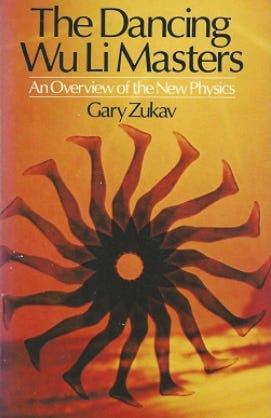“The hippies and the flower children craved authenticity, spontaneity, and experience… the enlightenment of Eastern mystics rather than the Enlightenment of Western Science.”
David Kaiser, How the Hippies Saved Physics (2011)
Students were protesting for civil rights and fighting to end the Vietnam War. Radical political anarchists advocated for dismantling the American system. Among a period of peak enrollment in higher education, 16 million students nation-wide dropped out of college and out of society. Some stayed in town, some pooled their college funds to buy land in the country and return to the garden.
A future post will describe the three types of hippies in more detail, but it’s important to say here that the counterculture movement was not monolithic. It was more like a collective of human rights movements that evolved with spontaneity and connected interpersonally through communities, music, and the underground press.
The urban scene was populated by students, political radicals, and free people like those living in San Francisco’s overly-famous Haight-Ashbury neighborhood. The other two scenes were rural: commune hippies and back-to-the landers. Urban hippies at universities were not just students, there were hippie professors, too.
In America,1968 was a pivotal year politically and socially. Theodore Roszak’s seminal book The Making of a Counterculture: Refections on the Technocratic Society and Its Youthful Opposition, was written during this time and published in 1969. To this day it remains among the best descriptions of the counterculture movement and its challenges. Roszak saw the counterculture youth as responding to technology, modern science, and Western worldview.
A 35-year-old college professor at UC Berkeley when his book was published, Roszak was listening to his students talking about the hypocrisy they saw, the challenges they faced, and their determination to bring systems change to America. In his book, he introduces the term technocracy:
“Ironically, it is the American young, with their underdeveloped radical background, who seem to have grasped most clearly the fact that, while such immediate emergencies as the Vietnam War, racial injustice, and hard-core poverty demand a deal of old-style politicking, the paramount struggle of our day is against a far more formidable, because far less obvious, opponent, to which I will give the name ‘the technocracy’—a social form more highly developed in America than in any other society.”
Technology was becoming pervasive in American culture on the scale of big science, nuclear reactors, and computer mainframes like those of the military-industrial complex. Technology was becoming a whole new hegemonic force bringing us out of the industrial age, systematically imposing a whole new structure and organization of nearly every aspect of American life.
From his point in time in the Sixties, Roszak attributes the rise of the counterculture to the technocracy. He saw the flower children’s departure from the mainstream as a rejection of a future society built on science.
But the hippies weren’t anti-science, their aversion was to the Western scientific worldview. They questioned the encroachment of technology into our communities and personal lives. Rural hippies were not neo-Luddites, they were determined to live more simply and find the limits of freedom.
An excellent example of professors with open minds discussing metaphysical questions disregarded by mainstream science is the Fundamental Fysiks Group. Long-haired physicists from UC Berkeley and Stanford University held a years-long conversation around quantum theory. This group is the subject of Kaiser’s book about how hippies saved physics.
“We have overlooked contributions from collectives like the Fundamental Fysiks Group precisely because their efforts have been so smoothly reabsorbed with the mainstream, like so many once-radical innovations of the 1970s. Yoga, organic foods, networked personal computers, identity politics, even the U.S. Army’s slogan of ‘Be all that you can be’—cribbed from the 1970s human potential movement—fail to rise an eyebrow anymore.”
The Fundamental Fysiks Group explored a theory of quantum entanglement called Bell’s theorem. In simple terms, this theory says that once quantum objects connect, they will always have a connection, some type of essential imprint. The group explored this theory and found that it explains mystical wisdom like, “we are all one. ” Science can validate mysticism, and we all are literally connected on some cosmic level.
Two members of this group wrote books that made this information accessible and became best-sellers still read today. Fritjof Capra gave us The Tao of Physics (1975), and Gary Zukav, The Dancing Wu Li Masters (1979).
On his quest to understand the hippies’ contributions to science and society, Kaiser looks back through the lens of the new millennium:
“We now know that leading lights of the counterculture and New Age movements were anything but antiscience… When our children send quantum-encrypted messages between their hyperfast quantum computers, they will be living in a world that a bunch of hippies helped to invent.” (Kaiser, 2011)
The counterculture movement had a place for anyone who wanted to be there, it provided a kind of social-cultural safe space in which to explore, be weird, eccentric, grow your hair, and push the boundaries of tradition, time, and space. While the phrase “hippie-dippie”—implying childish, foolish, stupid—has become popular, it’s a yawning re-fresh of the perpetual efforts to discredit the counterculture. I want to shed a different light on the people and the movement to show the genius, the healthy, and the good that remain. Throughout this series of posts you will find that the contributions to society by hippies have become, ironically, mainstream.
Up next: Hippies and Radicals
References for this post:
Capra, Fritjof, 1975. The Tao of Physics.
Kaiser, David, 2011. How the Hippies Saved Physics: Science, Counterculture, and the Quantum Revival.
Roszak, Theodore, 1969. The Making of a Counterculture: Refections on the Technocratic Society and Its Youthful Opposition.
Zukav, Gary, 1979. The Dancing Wu Li Masters.






